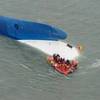Seaborne LPG Trade Rebounds: Dorian LPG
Seaborne LPG trade rebounded in the second calendar quarter of 2018 thanks to heavy lifting schedules in the Middle East and the United States, as well as an improvement in arbitrage economics towards the end of the three-month period, said Dorian LPG.
After a lackluster first calendar quarter of 2018, exports from the United States peaked at approximately 2.7 million metric tons in May 2018, and total U.S. exports for the first half of 2018 were 4% higher as compared to the same period in 2017.
Appetite for LPG in the East remained strong throughout the second calendar quarter of 2018 due to robust consumption within both the retail and petrochemical markets. China is estimated to have increased its first half of calendar year imports by about 6%, due to healthy propane dehydrogenation margins and limited domestic supply.
According to India's Petroleum Planning & Analysis Cell, LPG demand in India increased by 10% in the second calendar quarter of 2018.
In northwest Europe, the petrochemical sector continued to drive increased demand for LPG as cracking margins for LPG remained healthy relative to other feedstocks. Propane's spread to naphtha favored propane by $126 per metric ton in the second calendar quarter of 2018 versus $74 per metric ton in the second calendar quarter of 2017.
For the remainder of the year, further supply growth is expected as new production in the United States finds its way to the export market. Exports from the Mariner East 2 project on the U.S. East Coast are also anticipated to start in the fourth calendar quarter of 2018 following a series of setbacks during the pipeline construction phase.
East of the Suez Canal, additional LPG export supply is scheduled from Australia towards the end of the year as the Ichthys and Prelude projects exit their respective commissioning phases, adding a total of 2 million tons once at full capacity.
In shipping, freight rates initially fell to 2018 lows in April before recovering towards the end of the quarter off the back of higher exports and tighter vessel availability. The Baltic LPG Index averaged over $30 per metric ton in June and averaged $39 per metric ton in July. The Baltic Index exceeded $40 per metric ton during July for the first time since February 2016.
The VLGC orderbook stands at around 13% of the current fleet, with another two ships scheduled for delivery this year. A further 33 VLGCs, equivalent to around 2.7 million cbm of carrying capacity, will be added to the global fleet by year-end 2020, at which time supply and demand fundamentals are forecast to rebalance. The average age of the global fleet is now 9 years.
Liquefied gases are primarily used for industrial and domestic heating, as a chemical and refinery feedstock, as a transportation fuel and in agriculture. The LPG shipping market historically has been stronger in the spring and summer months in anticipation of increased consumption of propane and butane for heating during the winter months.
In addition, unpredictable weather patterns in these months tend to disrupt vessel scheduling and the supply of certain commodities. Demand for our vessels therefore may be stronger in the quarters ending June 30 and September 30 and relatively weaker during the quarters ending December 31 and March 31, although 12-month time charter rates tend to smooth these short-term fluctuations and recent LPG shipping market activity has not yielded the expected seasonal results.
To the extent any of our time charters expire during the typically weaker fiscal quarters ending December 31 and March 31, it may not be possible to re-charter our vessels at similar rates. As a result, we may have to accept lower rates or experience off-hire time for our vessels, which may adversely impact our business, financial condition and operating results.
















